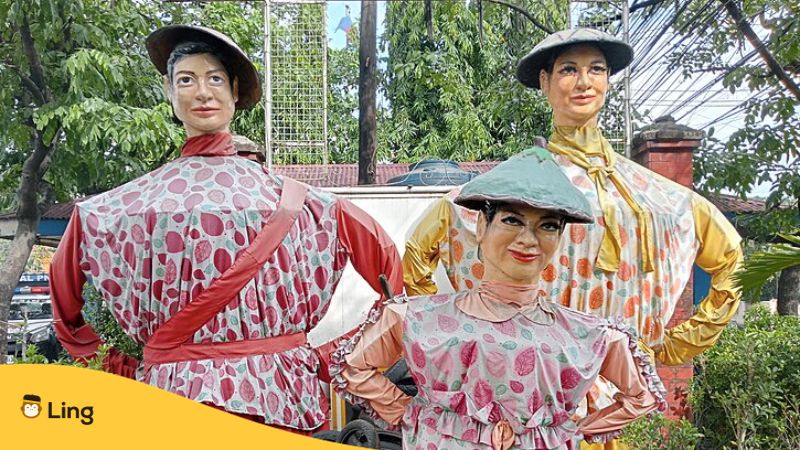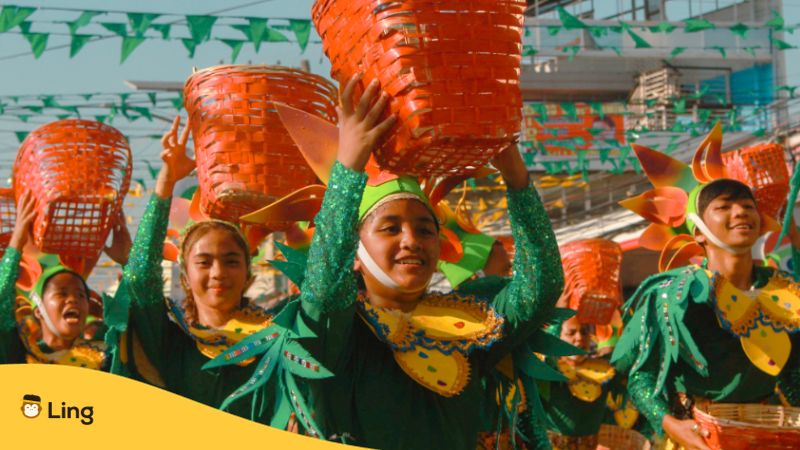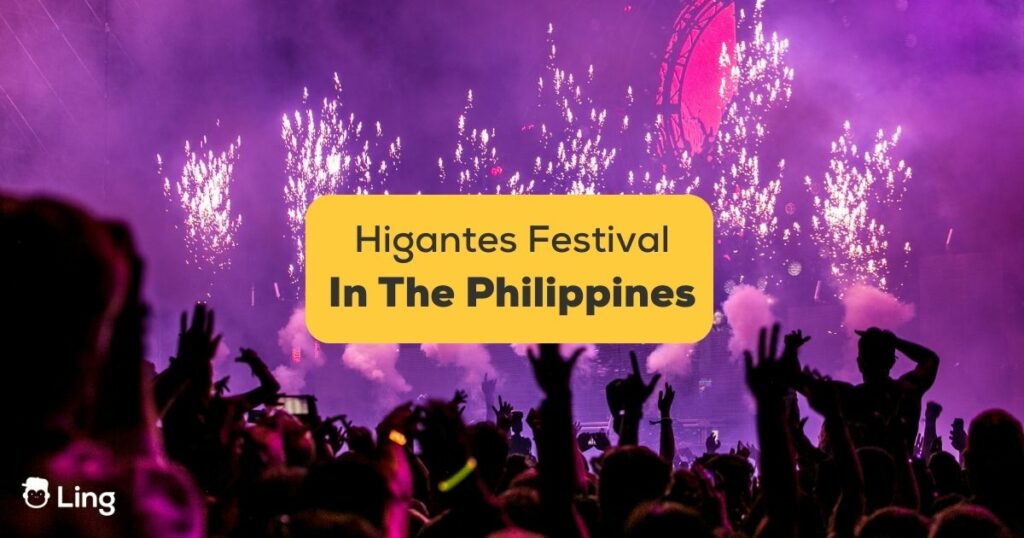Okay, so, you’ve heard of the Higantes Festival, right? Imagine a lively neighborhood in Angono Rizal, Philippines – kinda like that buzzing street where everyone’s chillin’ on a summer evening. But this isn’t your regular hangout. Come November, things get wild with the Higantes Festival! Think of it as a block party but with, you know, gigantic effigies (that’s a fancy word for statues). These aren’t just any statues. These towering figures are like the celebrities of the event.
“Higantes” is Spanish for giants. And, man, they ain’t kidding! These things are HUGE! But why? Well, it’s a nod to some cool Filipino history stuff. Like, way back during the Spanish rule times, the peeps of Angono were, let’s say, not super thrilled with their Spanish landlords. So, they started this tradition as a kinda ‘in your face’ gesture to the colonizers. Fast forward to today, and it’s like the Coachella of Filipino festivals.
Want to learn more? Let’s get to the bottom of this and the related Tagalog terms in this post!
What Is Higantes Festival?
The Higantes Festival is one of the most vibrant and culturally-rich festivals celebrated in the Philippines Drawing its name from the Spanish word ‘gigantes’, meaning ‘giants’, this festival is famed for its grand display of giant effigies made primarily from papier-mâché.
Back in the day, when the Spanish were doing their “we own this place” thing in the Philippines, the peeps in Angono were lowkey salty. I mean, wouldn’t you be? So, they started making these big ol’ caricatures, kinda throwing shade at the big-headed Spanish landlords and friars. It’s like the OG version of a meme war.
Fast forward a bit, and what started as a “take that!” to the colonizers, evolved into this epic bash celebrating art, vibes, and Filipino awesomeness. The fest goes on for days, leading up to this insane parade with these higantes rocking the streets. And when I joined in the celebration myself, I learned that every higante’s got a story. Some are like throwbacks to legends, others are real talk about today’s issues, and some? Well, they’re just a big party on two legs.

When Is Higantes Festival Held?
The festival is held every 22nd of November, a date that holds significant cultural and religious importance for the residents of Angono. This date is not arbitrarily chosen; rather, it coincides with the feast day of San Clemente, the patron saint of fishermen in the town.
San Clemente’s feast day is an integral part of the festival’s celebrations. The day begins with early morning masses in honor of the saint, followed by processions, parades, and the iconic display of the higantes. The celebrations extend for several days leading up to the 23rd, making the town a hub of activity, artistry, and communal gatherings during this period.
Visitors planning to attend the Higantes Festival should consider arriving a few days in advance. This allows them to immerse themselves in the pre-festival activities, which include art exhibitions, music and dance performances, and culinary feasts showcasing local Filipino delicacies. The buildup to the main event provides a holistic experience of the town’s cultural landscape, culminating in the grand parade of the higantes on the 23rd.
How Is Higantes Festival Celebrated?
The Higantes Festival, with its deep cultural roots and vibrant displays, unfolds in a series of meticulously planned events, each resonating with the spirit of Filipino traditions. The celebrations are a fusion of religious reverence, artistic flair, and community camaraderie.
At the heart of the festival is the majestic parade of the higantes. These towering effigies, made primarily of papier-mâché, take center stage, marching through the streets of Angono. Each higante is a masterpiece in itself, reflecting themes ranging from folklore and mythology to contemporary societal topics. Families, local organizations, and even schools might sponsor or create their own higante, adding personal touches and narratives.
As the higantes move, the air is filled with the rhythmic beats of Filipino drums and melodies of traditional instruments. Dancers, dressed in vibrant costumes, perform indigenous dances, adding dynamism and energy to the streets.
No celebration is complete without food, and the Higantes Festival offers a gastronomic journey. Stalls line the streets, serving local delicacies like kakanin, lechon, and pancit. The aroma of grilled seafood, a nod to the town’s fishing heritage, is particularly enticing.
In the days leading up to the main event, workshops are organized where locals and visitors can learn the art of crafting higantes. These interactive sessions provide a hands-on experience and deepen the understanding of the festival’s significance.
Reflecting the religious undertones of the festival, nightly vigils and masses are held at the town’s churches. These spiritual gatherings are a time for reflection, gratitude, and community bonding.
As night falls, the sky over Angono lights up with a spectacular fireworks display, marking the culmination of the day’s events and adding a touch of magic to the festivities.

Tagalog Words Related To The Higantes Festival
To truly immerse oneself in the Higantes Festival and understand its nuances, it’s beneficial to be familiar with certain Tagalog words and phrases that are intrinsically linked to the event. Here are some essential Tagalog terms that one might encounter during the festival.
| English | Tagalog |
|---|---|
| Giant | Higante |
| Feast or Festival | Pista |
| Decorative Float | Karosa |
| Thanksgiving | Pasasalamat |
| Vow or Devotion | Panata |
| Dance | Sayaw |
| Music | Musika |
| Food | Pagkain |
| Ocean or Sea | Karagatan |
| Traditional Boat | Baroto |
| Celebration | Pagdiriwang |
| Filipino Hat | Sambalilo |
Learn Tagalog With Ling
As we learned in this post, the Higantes festival is a celebration that transcends mere visual spectacle, touching the hearts of participants and observers alike. To truly immerse oneself in the festival, understanding the local language and nuances can add layers of depth to the experience.
For those eager to delve deeper into the Filipino language and learn more about such cultural intricacies, downloading the Ling app from the App Store or Play Store is a recommended step. With comprehensive lessons, interactive exercises, and cultural insights, the app offers a holistic approach to language learning, ensuring that you’re not just linguistically equipped but also culturally enlightened.































































